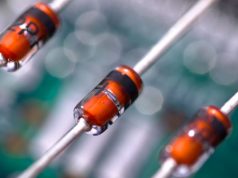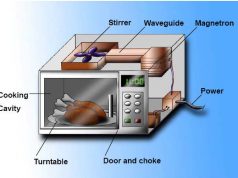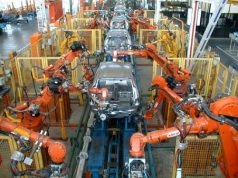 Từ vựng trong lĩnh vực điều khiển tự động đang phát triển từng ngày từng giờ. Để dịch được sách chúng ta cần có những từ điển chuyên ngành giúp cho việc dịch thuật và chọn thuật ngữ chuẩn hơn. Tôi xin lấy ví dụ một số các thuật ngữ tiếng Anh được dịch theo nhiều cách khác nhau (qua các tài liệu tham khảo bằng tiếng Việt):
Từ vựng trong lĩnh vực điều khiển tự động đang phát triển từng ngày từng giờ. Để dịch được sách chúng ta cần có những từ điển chuyên ngành giúp cho việc dịch thuật và chọn thuật ngữ chuẩn hơn. Tôi xin lấy ví dụ một số các thuật ngữ tiếng Anh được dịch theo nhiều cách khác nhau (qua các tài liệu tham khảo bằng tiếng Việt):
feedback: phản hồi, hồi tiếp, nuôi nghịch
feedforward: truyền thẳng, nuôi thuận
discrete-time system (digital system): hệ rời rạc, hệ số, hệ xung số
Các bạn có thể tự lấy thêm được nhiều ví dụ khác.
Việc sử dụng thuật ngữ thống nhất sẽ giúp cho những người đi sau nắm được kiến thức nhanh chóng hơn. Trong phần này tôi xin gửi một danh mục một số thuật ngữ điều khiển cùng với định nghĩa giải thích (theo nghĩa dùng trong ngành điều khiển tự động), xin mời các bạn yêu thích tiếng Anh hãy cùng tôi tìm thuật ngữ tiếng Việt tương đương.
Ví dụ: Từ “accuracy” thì nên dịch là “độ chuẩn xác” và phân biệt với từ “precision” là “độ chính xác” không? Cả hai từ này trong nhiều từ điển Anh-Việt đều dịch có nghĩa là “độ chính xác” hoặc “sự chính xác”, nhưng nghĩa của hai từ này (trong điều khiển và đo lường) hoàn toàn khác nhau.
(a) Kém chuẩn xác và kém chính xác (inaccurate and imprecise)
(b) Chuẩn xác và kém chính xác (accurate and imprecise)
(c) Kém chuẩn xác và chính xác (inaccurate and precise)
(d) Chuẩn xác và chính xác (accurate and precise)
Control Terminology
(According to Taylor, D.A., Marine Control Practice, Butterworths)
accuracy: A general term describing the degree of closeness with which the indications of an instrument approach the true values of the quantities measured.
a.c. tacho generator: An a.c. generator which produces an output voltage proportional to its speed.
actuator: A motor providing rotary or linear motion.
adaptive control system: A system in which the parameters are changed automatically in a way that will achieve the best possible performance of the system at all times.
Amplification: for an element or system, the ratio of the steady state amplitude of the output signal from an element or system to the amplitude of a sinusoidal input signal of a given frequency; or the ratio of the same two signal amplitudes when the input signal is of given frequency; or the ratio of the same signal amplitudes when the input signal has a constant unidirectional value.
Amplifier: A device in which an input is used to control a local source of power so as to produce an output which is greater than and bears a definite relationship to the input.
Amplitude: With regard to sinusoidal or oscillatory motion this is the maximum departure from the zero or rest position.
Attenuation: The inverse or reciprocal of gain.
Automatic controller: An element in an automatic controlling or regulating system which receives a signal representing the controlled condition. This is then compared with a signal representing the command signal. The output signal then operates to reduce the deviation.
Backlash: The largest distance or angle which any part of a mechanical system may be moved in a particular direction without transferring a force to the next part in the system.
Bandwidth: The frequency range within certain harmonic response characteristics, such as gain and phrase, are within specified limits.
Calibration: The means whereby the relationship between the values of the physical quantity applied to an instrument and the corresponding positions of the index are determined.
Cascade control system: A control system wherein one controller (the master) provides the command signal to one or more other controllers (slaves).
Chart: A paper sheet or surface on which permanent record is made.
Closed-loop control system: A control system possessing monitoring feedback, the deviation signal formed as a result of this feedback being used to control the action of a final control element in such a was as to tend to reduce the deviation to zero.
Command signal: An input signal to a control system which will determine the controlled condition value.
Comparing element: The element which receives as input the command signal and the controlled condition and provides as an output the deviation.
Constancy: The ability to reproduce a continuously measured quantity over a period of time. The conditions of the test are usually specified.
Continuous action: Some part or a complete control system whose output is a continuous function of the input.
Control action: The relationship between the input and output signals of a control system.
Controlled condition: The physical quantity or condition of the controlled body, process or machine which the system is to control.
Controlled device: A body, process or machine which has a particular condition controlled by the system.
Controller: In a process control system this unit will combine the function of the input, comparing, amplifying, and signal processing elements.
Control system: An arrangement of elements (amplifiers, converters, human operators, etc.) interconnected and interacting in such a way as to maintain, or to affect in a prescribed manner, some condition of a body, process or machine which forms parts of the system.
Correcting unit: In a process control system this unit combines the motor and correcting elements.
Correction: An amount which must be added to or subtracted from the indicated value to obtain the true value of the measured quantity.
Critically damped: This is the minimum degree of damping in an instrument or control system which will prevent oscillation after an abrupt change.
d.c. tacho generator: A d.c. generator which provides an output voltage proportional to its speed.
Dead zone: The region wherein a change of the input signal causes no change in the output signal.
Derivative action: The action of a control element where the output signal is proportional to the rate of change of the input signal.
Derivative action time: In a proportional plus derivative controller this is the time interval in which the proportional action signal increases by an amount equal to the derivative action signal, when the rate of change of deviation is constant.
Desired value: The value of the controlled condition which the operator desires the system to maintain.
Detecting element: The part of a measuring or control system which responds directly to the value of the controlled condition.
Deviation: The difference between the measured value of the controlled condition and the command signal.
Discontinuous action: Some part, or a complete control system, whose input is a discontinuous function of the input. Examples are on-off and bang-bang.
Discrimination: The smallest change in the measured quantity which will produce an observable movement of the index.
Distance/velocity lag: The time period between the alternation of a signal and its unchanged arrival at another part of the system.
Disturbance: Any change inside or outside the control system which upsets the equilibrium.
Dynamic stability: A system’s ability to return to a stable state after a disturbance.
Feedback: A signal transmitted or fed back from a later to an earlier stage.
Feed-forward: A supplementary signal transmitted or fed along a separate path, parallel to the main forward path, from an initial to a later stage.
Final controlling element: The element whose action occurs directly on the controlled body, process or machine, e.g. a valve.
Gain: The ratio of output to input signal, which are of the same physical form, in any part of a control system.
Graduation: The marking or setting out of a scale.
Hunting: The prolonged oscillation or cycling or a controlled variable.
Hysteresis: The internal energy loss in an element that results in an output signal which depends not only on the input signal but whether it is increasing or decreasing in value.
Index: The indicator which, by its position in relation to a scale, provides a value of the measured quantity, e.g. pointer, light-pot, liquid surface, recording pen or stylus.
Indicating instrument: A measuring instrument in which the value of the measured quantity is visually indicated, but not recorded.
Indication error: The difference between the true value of the measured quantity and the indicated value.
Inherent regulation: A process property which results in equilibrium after a disturbance without any monitoring feedback.
Input signal: The signal which when received by an element results in some action.
Instrument range: The range of values over which an instrument is able to measure.
Integral action: The action of a control element where the output signal changes at a rate proportional to its input signal.
Integral action time: In a proportional plus integral controller, this is the time interval in which integral action increases by an amount equal to the proportional action signal, when the deviation is constant.
Kinetic control system: A control system, the purpose of which is to control the displacement, or the velocity, or the acceleration, or any higher time-derivative of the position of the controlled device.
Load: In a kinetic control system this may be the controlled device, or the properties, e.g. inertia, friction, of the controlled device that affect the operation of the system. For a process control or regulating system this is the rate at which material or energy is fed into, or removed from, the plant.
Main forward path: The route from the command signal, taken by the various signals, through to the controlled device.
Measuring element: This element receives that signal from the detecting element and provides a signal representative of the controlled condition.
Misalignment: The deviation present in a position control system.
Motor element: The element which moves the correcting element as a result of a signal from an automatic controller.
Natural frequency: A frequency at which free oscillation occurs.
Observation error: The error introduced by an observer when reading an instrument.
Offset: A continuing deviation usually occurring when proportional action is used alone.
On-off action: A particular case of two-step action, where one of the output signal values is zero.
Open-loop control system: A control system without monitoring feedback.
Output signal: The signal from one element to the next element in the loop.
Overdamping: An amount damping which is greater than that required for critical damping.
Overshoot: The amount by which the maximum instantaneous value of the step function response exceeds the steady-state value.
Plant: The installation in which a process is carried out.
Process: The act of physically or chemically changing (including combining) matter or of converting energy.
Process control system: A control system, the purpose of which is to control some physical quantity or condition of a process.
Proportional action; A control system, the purpose of which is to control some physical quantity or condition of a process.
Proportional action: The action of a control element which provides an output signal that is proportional to its input signal.
Proportional band: The range of value of deviation which result in the full operating range of output signal of the controlling unit as a result of proportional action only. It may be expressed as percentage of the controller’s scale range.
Proportional controller: A controller which provides only proportional action.
Ranging: Adjusting an instrument so that the index movements is in agreement with a scale at two or more positions.
Ratio control system: A control system in which two or more physical quantities or conditions are maintained at a predetermined ratio.
Recording instrument: A measuring instrument which records the values of the measured quantity on a chart.
Regulating system: A control system, the purpose of which is to hold constant the value of the controlled condition or to vary it in a predetermined manner.
Repeatability: The ability of an instrument to reproduce readings during a short duration test under fixed conditions.
Resonant frequency: The frequency, in a control system, at which the ratio of the amplitude of the controlled condition to the command signal is maximum.
Response time: With reference to a step function input signal this is the time interval between the step in the input signal and the first coincidence of the output signal with the final steady value of the output signal.
Scale: A set of marks and numbers over which the index moves in order to provide a reading.
Scale error: The difference between the position of a scale mark and its theoretical position on a correctly graduated scale.
Scale mark: One of the marks which forms part of a scale.
Scale range: The variation in the measured quantity that can be read on the scale.
Self-actin controller: An automatic controller which obtains the energy required for its operation from the process it is controlling.
Sensitivity: The sensitivity of an instrument at any indicated value is the relationship between the index movement and the change in the measured quantity that produces it.
Servomechanism: An automatic monitored kinetic control system which includes a power amplifier in the main forward path.
Servomotor: The final control element present in a servomechanism. It is the motor which receives the output from the amplifier element and drives the load.
Setting: The adjustment of an instrument such that the index movement agrees with a pre-established scale at two or more points.
Settling time: The time taken for the index of an instrument, or the controlled condition of a system, to reach and remain within a specified deviation from its final steady value, after an abrupt change.
Set value: The command signal which is supplied to a regulating system.
Signal: A physical quantity used to transmit information between one element of a control syste
Signal processing: The manipulation of information contained in a signal by modulating, demodulating, mixing, gating, computing or filtering.
Span: The unit signal range that corresponds to the designed working range of the output signal.
Stability: For an instrument this means that repeated readings taken over long periods, under defined conditions, give the same results. A system is considered stable if the response to an impulse input approaches zero as time approaches infinity. Also, with reference to a system, stability means that bounded input produces a bounded output.
Steady state: The final condition that a physical quantity of a system reaches when the effects of all external disturbances have ceased.
Step function response: The transient response resulting from an input signal or disturbance which is sudden occurrence or step function.
Stiffness (coefficient): When considering a kinetic control system this is the force or torque per unit deviation.
Summing amplifier: An amplifier which receives two or more input voltages or currents and produces an output voltage which is proportional to their sum.
Swashplate pump: A pump whose cylinders are arranged axially and whose pistons, or their connecting rods, act together on a slanting or inclined member in such a way that when relative rotation between the slanting member and the cylinder system takes place the pistons are caused to reciprocate.
Synchro: An electromechanical device used for data transmission.
Synchro control transformer: A synchro whose primary is supplied with electrical angular information (from the connected control transmitter or control differential transmitter) and whose secondary supplies a voltage proportional to the difference between the synchro angle and the electrical angle.
Synchro control differential transmitter: A synchro, the rotor of which is mechanically positioned, for modifying electrical angular information received and for transmitting information corresponding to the sum or difference of the synchro and electrical angles. It is normally used to supply control transformers or other control differential transmitters.
Three-term controller: A controller which provides proportional, integral and derivative actions.
Torque motor: A motor of any type, but usually a.c., which does not rotate continuously, but is arranged to exert a torque opposing, for example, that of a spring or gyroscope.
Transducer: A device used for converting a signal or physical quantity of one kind into a corresponding physical quantity of another kind.
Transient response: The time variation of the output signal that results when an input signal or disturbance of some specific nature is applied.
Two-step action: The action of a control element when the output signal changes from one predetermined value to another as a result of the input signal changing sign.
Two-step controller: A controller whose output signal changes from one predetermined value to another as a result of the deviation changing sign.
Two-term controller: A controller which provides proportional action and either integral or derivative action.
Undamped natural frequency: The natural frequency of oscillation of a system that would occur if damping were reduced to zero.
Under damping: A degree of damping in a system which is so small that when a disturbance occurs one or more cycles of oscillation take place.
Valve hand: That part of the piston of a piston valva which cuts off the flow of fluid through a port by covering it.
Variable stroke lamp: A radial or swashplate pump in which the crank throw or swash angle respectively can be varied so that the amount of fluid delivered per revolution of the pump can be varied.
Zero error: The indication given by an instrument when the measured quantity has a zero value.








